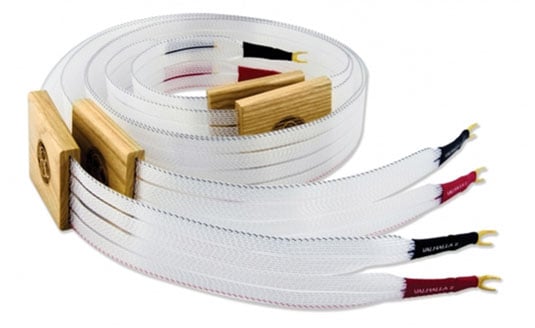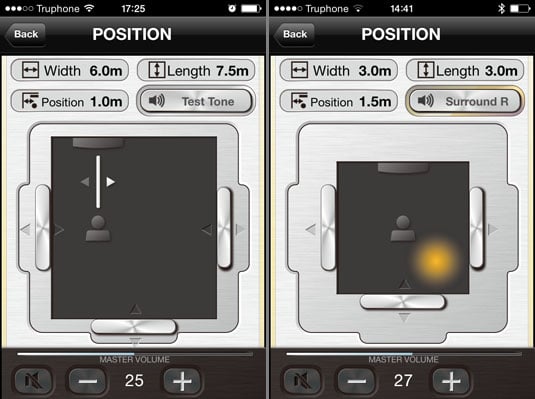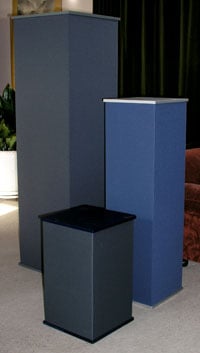This article is more than 1 year old
We need to talk about SPEAKERS: Sorry, 'audiophiles', only IT will break the sound barrier
Design, DSPs and the debunking of traditional hi-fi
Making waves with IT
One of the tenets of audiophile systems is that they are assembled from components, allegedly so that the user can "choose" the best combination. This is a complete myth, because when the amplifier designer has never met the loudspeaker designer, the use of active crossovers optimised for the speaker is precluded.

Nordost Valhalla 2 Reference Speaker Cable will set you back £10k – WTF?
The main advantage of component systems is that the dealer can sell ridiculously expensive cables, hand-knitted by Peruvian virgins and soaked in snake oil, to connect it all up. That some of these are supplied with arrows denoting the direction of signal flow defies description. Fortunately, the electrons can’t see the markings and behave normally.
I think it is interesting to contrast the small IT device with considerably larger audiophile speaker systems. IT devices generally make a clean job of the bandwidth that can be realised by filtering out the frequencies that cannot be reproduced to avoid distortion.
Clearly in iPhones and tablets, the designer has complete control and so can use some of the processing power of the device to improve the sound. The foibles of the impossibly small transducers can be equalised in time and frequency. An impression of a bass response can be obtained by frequency doubling so that missing bass frequencies are reproduced as a second harmonic.

Yamaha's YSP-1400 soundbar DSP can be remotely configured for room size and listener position from an app
When the sound from a tablet has rapidly become so good considering the serious constraints of size, weight, power and cost it is a sad reflection on the squalid state of audiophilia that the sound of a legacy loudspeaker has made little progress for years despite those constraints being absent.
Science makes progress, pseudo-science doesn’t. That leaves the door open for IT companies to take over hi-fi markets. One obvious tool IT can bring to the party is DSP-based room correction, so that the variations in response due to inevitable standing waves in the room can be compensated.

A full-range flat speaker, Earo's Wally show's what's possible in loudspeaker design, but it'll cost ya
Legacy loudspeakers are omni-directional at low frequencies, but as frequency rises, the radiation becomes more directional until at the highest frequencies the sound only emerges directly forwards. Thus to enjoy the full frequency range, the listener has to sit in the so-called sweet spot. If one moves off axis, the sound becomes increasingly deficient in treble. But it is this off-axis sound that excites the reflections in the room.
If the reflections are too different from the direct sound because of the treble deficiency, the HAS will not be able to correlate them to determine the true source of the sound and they will damage the image. As a result legacy loudspeakers with sweet spots need extensive room treatment to soak up the deficient off-axis sound. Such dead rooms are oppressive and not consistent with domestic living arrangements.

Legend prototype omni-directional speakers
In contrast, omni-directional speakers radiate accurate sound in all directions, so the HAS can easily tell the direct sound from the reflections. They do not need extensive room treatment and work well in locations from cement block store rooms to luxury yachts. They only need room correction at low frequencies.
Despite their clear advantages, they remain uncommon because when time accuracy is needed and high frequencies are to be radiated all around, internal computing and equalisation is necessary and carpenters don’t know how to do that. Disruptive technology like this is not especially hard to make in quantity or at different sizes and price points, but it won’t come from traditional manufacturers, just as the iPod did not. ®
John Watkinson is an international consultant on digital audio and a Fellow of the AES (Audio Engineering Society). He is the author of numerous books on audiovisual and avionics systems, regarded as industry bibles.
